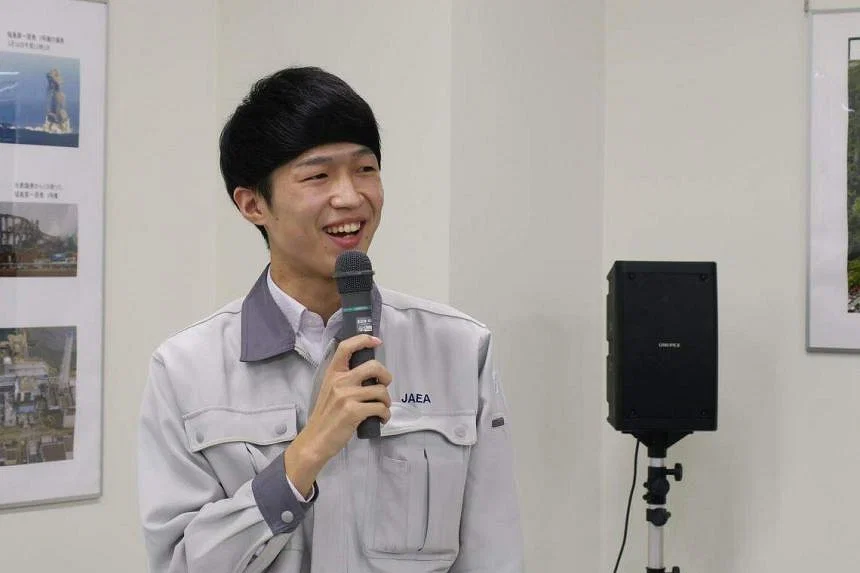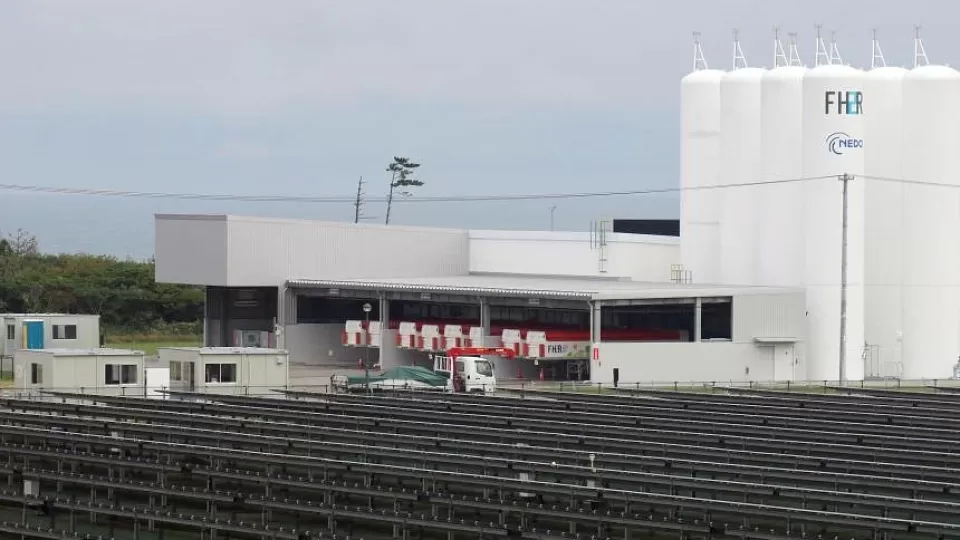March 13, 2023
FUKUSHIMA – Imagine cars flying over Tokyo skyscrapers that were once lit up by nuclear energy but are powered by “green hydrogen” produced in north-east Japan.
That future is almost within reach in Fukushima, which has drastically reinvented itself following the Great East Japan earthquake, tsunami and nuclear disaster that occurred 12 years ago on March 11.
Local commentators are dubbing the area “Fukushima Valley” – taking a leaf from Silicon Valley – given the growing, vibrant start-up and robotics culture that is taking root along the Hamadori coastal road.
Test flights for flying cars are set to begin in months. Fukushima is also home to Japan’s largest drone test field and the world’s largest “green hydrogen” facility, which generates hydrogen without using fossil fuels.
Yet the nuclear industry was once the largest employer there, after the Fukushima Daiichi nuclear plant opened on March 26, 1971.
Disaster struck on March 11, 2011, two weeks before the plant’s 40th anniversary: North-east Japan was jolted by a magnitude 9.0 earthquake – the strongest recorded in the country.
The tremor unleashed 15m-high tsunami waves that slammed into Fukushima Daiichi, triggering nuclear meltdowns and a hydrogen explosion that spewed radiation into the air.
Some 22,212 people died as a result or are missing, the Reconstruction Agency said in its latest tally, including disaster-related deaths.
Decommissioning of the crippled plant – site of the world’s worst nuclear accident since Chernobyl in 1986 –is expected to be completed only around 2050.
The Fukushima Innovation Coast Framework, which spans 15 municipalities, 12 of which had been under sweeping exclusion orders, aims to revitalise the region by promoting cutting-edge industries, Fukushima Governor Masao Uchibori said.
More than 400 companies have already moved in.
The scheme is supported by six pillars: decommissioning, robotics and drones, energy and environment, agriculture, forestry and fisheries, medicine, and aerospace.
Mr Yuto Aoki has returned to work in the area. Once a carefree teenager from the Fukushima town of Naraha, he fled with his family to the nearby Ibaraki and Saitama prefectures when the disaster struck.
The 27-year-old said the disaster shaped who he is and influenced his choice of work. He is now part of a team responsible for building and testing decommissioning robots at the Naraha Centre for Remote Control Technology Development (Narrec).
“It may be unrealistic to expect Fukushima to ever return to how it once was,” he said. “But I believe that only in a future where more people move in can ‘reconstruction’ be achieved’.”

Mr Yuto Aoki, 27, who was born in Naraha in Fukushima prefecture, said the tsunami and nuclear disasters have shaped him as a person and influenced his choice of work. ST PHOTO: WALTER SIM
Green Hydrogen
Hydrogen is widely touted as a clean, non-polluting source of energy. But the problem lies in the process of extracting it from water during electrolysis that uses power generated by greenhouse gas-emitting fossil fuels.
This is known as “grey hydrogen”, and accounts for as much as 99 per cent of hydrogen power in circulation today, said Mr Hidenori Saka of the New Energy and Industrial Technology Development Organisation (Nedo).
“Blue hydrogen” is the intermediate grade – the emitted carbon dioxide is captured, stored and used – while “green hydrogen” is the cleanest.
Nedo oversees the Fukushima Hydrogen Energy Research Field (FH2R) – a 220,000 sq m area largely occupied by 68,000 solar panels used to generate power for electrolysis.

The hydrogen-fuelled Olympic torch used in the Tokyo Games in 2021 is on display at the Fukushima Hydrogen Research Energy Field in the town of Namie, Fukushima. ST PHOTO: WALTER SIM
FH2R, which opened in March 2020 in the town of Namie, produces enough hydrogen daily to fill 560 fuel-cell vehicles a day or power 150 average Japanese households for a month, estimates have shown.
While the question of how to scale up in an environmentally-friendly manner remains, Mr Saka said hydrogen can be a more stable energy source than other weather-reliant forms such as solar and wind. This is because it can be stored for long periods and transported over long distances.
Global audiences had a glimpse of the potential of “green hydrogen” in July 2021, when FH2R-generated hydrogen was used as fuel for the Olympic torch in the delayed Tokyo Olympics.
Japan aims to use hydrogen to power ships by 2030 and planes by 2050.
Prepare for take-off
A time may come when hydrogen can be used to power drones and robots. Tests are already underway at the Fukushima Robot Test Field (RTF), which opened in March 2020 13km north of FH2R, in the city of Minamisoma.
Companies from across Japan have launched satellite offices to make use of the 500,000 sq m, 15.6 billion yen (S$154.7 million) facility.

A view of the Fukushima Robot Test Field, used to test-flight drones. The field also has mock facilities such as buildings, bridges and tunnels for the testing of robots. ST PHOTO: WALTER SIM
Among them is Tokyo-headquartered Robotcom And FA.com, which develops robot systems, and which set up a “smart factory” near RTF in June 2021.
General affairs manager Hitoshi Yamaguchi likened the factory to Google Maps, which uses real-time information to predict the best route and estimate an arrival time for users.
He added that the digital factory “transfers the physical environment onto a virtual space with real-time data fed in to produce forecasts of quality, inventory, maintenance, energy, and logistics”.
Meltin MMI, a company that creates medical devices and avatar robots by using bio-signals, and teTra Aviation, which is building flying cars, have also set up outposts in RTF.
There are plans by the national government to start, within months, three permanent test routes for flying cars, connecting bases in Minamisoma and Namie.
RTF vice director-general Yoshinobu Hosoda said he hopes the field can help develop operational guidelines including technical standards, piloting skills, airworthiness and traffic management.
Elsewhere in Minamisoma, Hokkaido-based “space tourism” start-up Iwaya Giken opened a research and development centre in May 2022.
The firm made headlines recently when it announced plans to take tourists 25km into the stratosphere on manned balloons by year-end, at a cost of 24 million yen (S$238,000) per person.
It says that the altitude allows sightseers to gaze down upon the Earth without needing any special training. More than 300 test flights have been conducted thus far.
Back on earth, Nissan Motor is conducting mobility-as-a-service trials in Namie as a solution for transportation issues in depopulated areas, with only one bus service plying the town.
Among its regular users is Ms Aoi Yoshino, 24, who lauded the convenience: “In the past, I could only go to places within walking distance, but now I can explore cafes and eateries further away.”
Moving on by coming to terms with the past
The general feeling, however, is that Fukushima can never quite move on without addressing the elephant in the room: the crippled nuclear plant.
To help in this regard, the Collaborative Laboratories for Advanced Decommissioning Science (Clads) aims to grow global expertise in nuclear accidents through field analyses and developing radiation-tolerant technology.
Deputy director-general Tadahiro Washiya admitted: “Severe nuclear accident research has not been conducted much, and it was assumed that there would not be any accident in power plants.”
Fukushima has highlighted “many knowledge gaps” even experts have, he said, adding: “It is important to understand what should be done and what happens to the inside of a nuclear core during an accident.”
Over at nearby Narrec, decommissioning robots are test-piloted using mock-up stairs and a 5m-deep water tank. A virtual reality system that replicates the interior of Fukushima Daiichi allows navigators to venture deep into the site.

Mr Nobuhisa Nosaki of the Naraha Centre for Remote Control Technology Development (Narrec) demonstrates a virtual reality system that brings users inside the crippled Fukushima Daiichi nuclear plant. ST PHOTO: WALTER SIM
It is also cultivating community interest through field visits and robotics contests with high schools.
Mr Aoki, who has worked at Narrec for six years, looks forward to a future where the decommissioning is complete.
He said: “Frankly, I cannot imagine how it will be like, but I believe that only then will more people feel assured about setting down roots here.”


